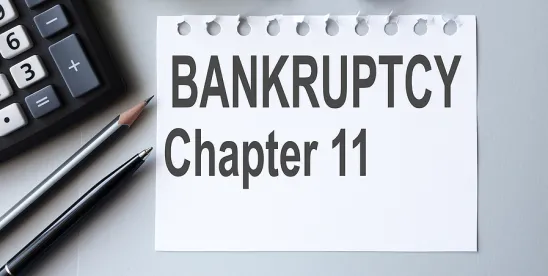When a liquidating debtor seeks to assume a lease, one of the lessor’s immediate questions is who will be the assignee. But what happens when a liquidating debtor seeks to assume a lease and waits up to two years thereafter to determine who the assignee will be? Although peculiar, the analysis of whether to grant the assumption rests on evaluating the three basic requirements under section 365 of the Bankruptcy Code. By preserving the lessor’s ultimate ability to object to a proposed assignment, and with a considerable amount of discretionary liquidity, assumption can prove to be a value-maximizing decision for an estate notwithstanding a lessor’s opposition to such future uncertainty.
Background
On August 6, 2023, Yellow Corporation and its affiliates (collectively, “Yellow”) filed for chapter 11 bankruptcy protection in the United States Bankruptcy Court for the District of Delaware. Prior to its bankruptcy filing, Yellow was a leading trucking and logistics company and boasted one of the largest trucking networks in North America. Since filing for bankruptcy, Yellow has been conducting a robust marketing and sale effort to capitalize on the value of its assets, having consummated 17 sale transactions totaling nearly $1.9 billion. In Yellow’s continued strategy to monetize and dispose of estate assets, on February 12, 2024, Yellow filed a motion (the “Assumption Motion”) to assume up to 78 unexpired leases and thereafter strategically market the leases, some of which were already subject to pending bids, over the following two years to maximize the value of the leases for the benefit of Yellow’s stakeholders. In short, Yellow had previously obtained court approval to extend the initial 120-day assumption deadline by another 90 days, and therefore now needed to assume its valuable leases pursuant to the Assumption Motion or else have its leases automatically rejected under section 365(d)(4) of the Bankruptcy Code.
Assumption Motion
In support of the Assumption Motion, Yellow argued the following three points.
Section 365(a) of the Bankruptcy Code provides that a debtor may assume or reject any unexpired lease within the debtor’s business judgment, which should be granted as a matter of course, so long as such judgment is not a product of “bad faith, whim, or caprice.” Here, the assumption would preserve Yellow’s ability to market and sell valuable assets of the estates and avoid the loss of hundreds of millions of dollars in value.
The debtor must also comply with section 365(b) of the Bankruptcy Code before being authorized to assume an unexpired lease. Section 356(b)(1)(A) requires a debtor to cure or provide adequate assurance of promptly curing prepetition defaults. To satisfy this requirement, Yellow analyzed its books and records to identify what amounts would be necessary to cure each of the subject leases and proposed to pay such amounts (some of which remained subject to negotiation with the landlord).
Further, section 365(b)(1)(C) of the Bankruptcy Code requires a debtor to provide adequate assurance of future performance, which considers the facts of the proposed assumption using a practical, pragmatic approach, not a showing of an absolute guarantee of performance. Here, Yellow’s approximately $300 million of cash on hand and continuing cash proceeds from unrelated sales demonstrated that Yellow’s significant liquidity was sufficient evidence that Yellow can perform its continuing obligations under each assumed lease.
Objections for Certain Landlords
A number of landlords objected to Yellow’s Assumption Motion. The main objection was simple: Yellow is liquidating, not reorganizing, and such assumptions will only benefit the estates if Yellow identifies an assignee in a period of time whereby the continuing costs of the leases borne by Yellow do not exceed the consideration the assignee will pay for the lease. Similarly, some landlords objected that a speculative hope of a future assignment of the leases to an unidentified assignee does not constitute adequate assurance of future performance (i.e., does not satisfy section 365(b)(1)(C)). Indeed, some landlords argued that certain properties associated with the leases at issue were vacant and had never been subject to any bids.
The landlords also argued that the proposed lease assumptions were inconsistent with Yellow’s bidding procedures order, which contemplated the sale process concluding before the end of 2023, not two years after the leases could be assumed. An additional argument asserted by the landlords was that the proposed cure costs were grossly understated by Yellow – there were millions of dollars related to unpaid prepetition rents, property repair and maintenance, vandalism, and related damages that were not reflected in the Assumption Motion’s cure schedule. Underpinning this objection was the fact that nowhere in the Assumption Motion did Yellow address the magnitude of the discrepancies between Yellow’s proposed cure schedule and the actual cure amount (e.g., one landlord asserted a $10.8 million cure amount, while Yellow claimed the cure amount was only $131,880).
On February 26, 2024, the bankruptcy court granted the Assumption Motion with respect to 29 uncontested unexpired leases. The hearing on the Assumption Motion was continued for the landlords whose objections were not resolved.
The Bankruptcy Court’s Analysis
From the bench, the bankruptcy court granted Yellow’s Assumption Motion with respect to the 13 contested leases after noting that the motion was “unusual” and presented “novel issues” because of Yellow’s intention to assign the leases up to two years after the assumption. As an initial step, the bankruptcy court held that Yellow’s decision to assume the leases was a proper exercise of Yellow’s business judgment that the leases were valuable, supported by the fact that no other stakeholders objected to the Assumption Motion (e.g., the unsecured creditors’ committee, equity, pension funds).
After reflecting that the proposed cure amounts had been revised for certain leases, the bankruptcy court considered whether section 365(b)(1)(C) was satisfied. Since Yellow’s liquidity is expected to grow to more than $400 million by the end of February 2025, the bankruptcy court opined that Yellow could afford to pay tens of millions a year in cure costs and still have hundreds of millions of dollars of cushion. Based on Yellow’s significant liquidity, the bankruptcy court did not order that amounts be segregated to satisfy the assumed lease obligations.
Because Yellow satisfied all of the section 365 assumption requirements, the bankruptcy court approved the Assumption Motion with respect to the contested leases. Importantly, unlike the bankruptcy court’s first order authorizing the assumption of 29 unexpired leases, the order authorizing the assumption of the 13 unexpired leases expressly preserved not only Yellow’s ability to assign any lease, but also the applicable landlord’s right to contest the assignment.
Takeaways
Although Yellow’s Assumption Motion presented unique facts and contemplated the debtors continuing to pay the significant expenses associated with the targeted leases over the next two years, Yellow’s decision could prove to be extremely profitable. To date, Yellow’s sale process has thrived, and the professionals have demonstrated an impressive track record of successes. By granting the Assumption Motion, the bankruptcy court deferred to Yellow’s business judgment after ensuring that the objecting landlords were adequately protected by an unusually flush estate.
But to the landlords’ credit, their arguments did not fall on deaf ears. As reflected in some objections, certain of the leases have allegedly not received any interest from bidders. Under such a scenario, and reviewed in isolation, Yellow’s decision to pay millions of dollars for those leases could prove to be the wrong choice. Yet, no one would declare the sale of substantially all of Yellow’s assumed leases for tens of millions of dollars (if not more) a failure solely because several leases did not prove to be marketable. And because the objecting landlords preserved their rights to object to any proposed assignment, for the time being, the landlords can enjoy a full recovery of their outstanding prepetition and postpetition debt and the prospect of a new counterparty within the next two years.
Yellow’s Assumption Motion is a helpful reminder to (1) not let the section 365(d)(4) deadline to assume or reject nonresidential commercial leases lapse, (2) maintain a long-term approach about what is most beneficial for an estate and (when possible) not let a debtor’s short-term cash position dictate meaningful business decisions, and (3) when representing a landlord, carefully review a debtor’s section 365 motion to consider the proposed cure costs and proposed assignee and expressly preserve your client’s right to object to the proposed assignee in the future (if applicable).




 />i
/>i

